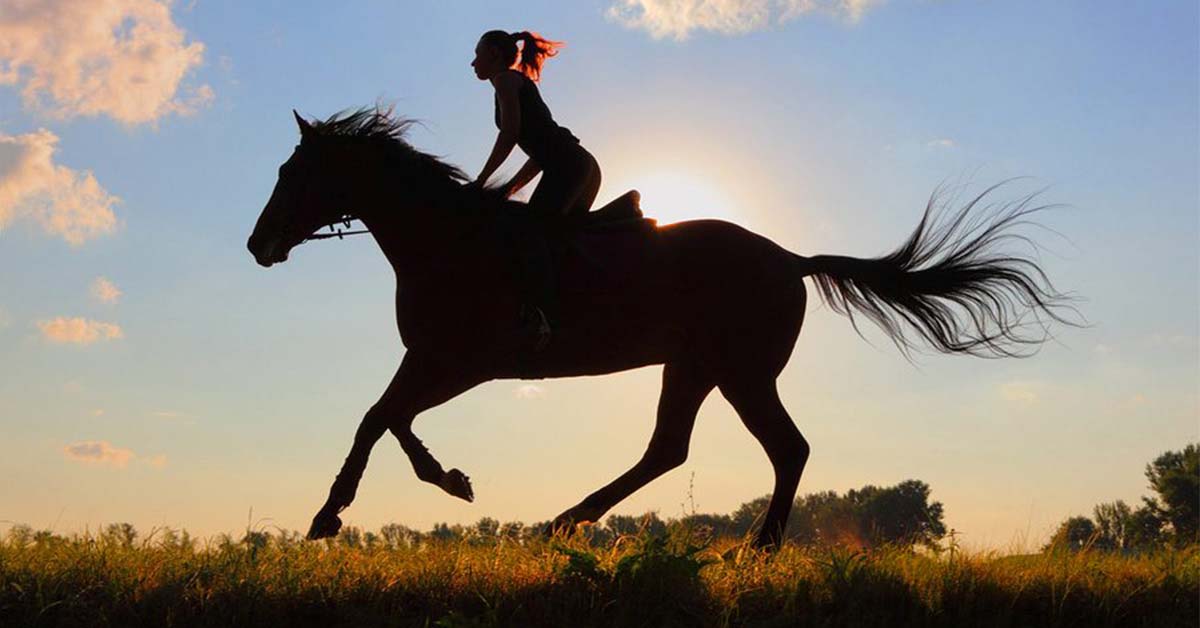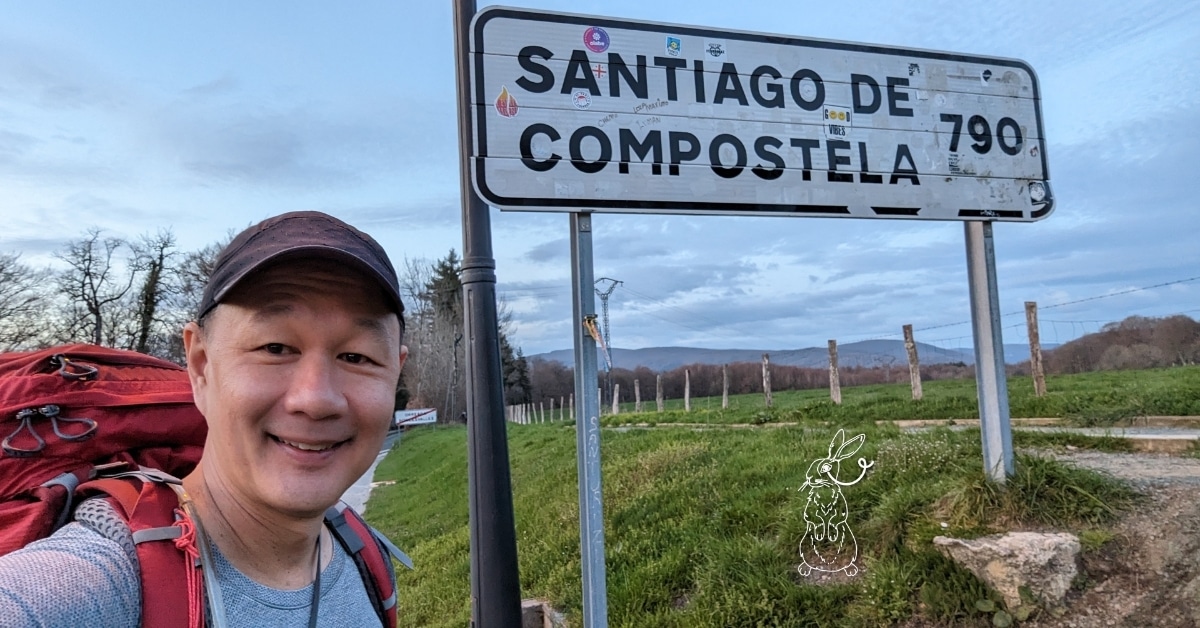
Credit: Valerie Valberg-Yeoh
I couldn’t contain my excitement as I crossed the Gobi Desert, leaving the Silk Road cities in Northwestern China behind, and looked forward to the second part of my Silk Road journey – the picturesque and exotic Xinjiang.
The Gobi was as I expected: sheets and sheets of desert sand and rocks unfolding as the high-speed train whizzed by at 180km/hour. The train couldn’t go any faster because of the crosswinds.
What astounded me were the rows upon rows of wind farms. The Gobi’s vastness and strong winds make it an ideal location for wind energy production.
I observed no more construction – everything was already up and running. This was the China I was witnessing. A country forging ahead with technology and AI, green know-how, and leading in the manufacture of top-quality goods.
Similar to how Singapore tries to reclaim every bit of land we can, China was working on ‘greening’ the desert to expand its usable territory. Already, we saw pockets of green cultivation in the Gobi.
After 3.5 hours of commuting, we finally reached Xinjiang. Over the next eight days, we would see more of this huge, beautiful land mass spreading far and wide over 1.6 million square kilometres.
With landscapes of snow-capped mountains, turquoise lakes, and grand geoparks, it’s little surprise why Xinjiang is a growing tourist destination.
Advertisement
Silk Road revival
Many reasons abound for the decline of the Silk Road between AD1360 and AD1450. But that’s a history lesson for another time.
Importantly, a Silk Road revival is currently under way. Because of its geopolitics, culture, resource advantage, and strategic position in the middle of the ancient Silk Road, Xinjiang is well-poised for a revival.
This can be seen in the Belt and Road Initiative (BRI) and 21st century Maritime Silk Road Initiative that China launched in 2013. The objective? To boost infrastructure and trade between China, Central Asia, Africa, and Europe.
Since 1955, Xinjiang has been known as the Xinjiang Uyghur Autonomous Region. Her neighbours are India, Pakistan, Afghanistan, Kazakhstan, Kyrgyzstan, Tajikistan, Mongolia, and Russia. This proximity to so many countries adds to its dynamism.

Credit: Valerie Valberg-Yeoh
We were mesmerised by the exotic melting pot of cultures. This can be seen in the architecture, food, attire, music, craft, religions practised, and products sold.
The good-looking Uyghurs, a Turkic people, are the largest ethnic group there (comprising 48% of the total population of 25 million). They converted to Islam in the 10th century.
Turpan
The first destination on our itinerary was Turpan. It’s the second-lowest point below sea level in the world and a key stop on the Northern Silk Road, serving as a crossroads for routes leading to Samarkand, Persia, India, and the Tarim Basin.
Turpan is an inland basin far away from the sea and surrounded by mountains that block moisture-bearing winds. Hence winters are bitterly cold and summers scorching. We were told to layer on more sunscreen for UV protection. Thankfully, the temperature had dropped from 41 to 39 degrees when we arrived.
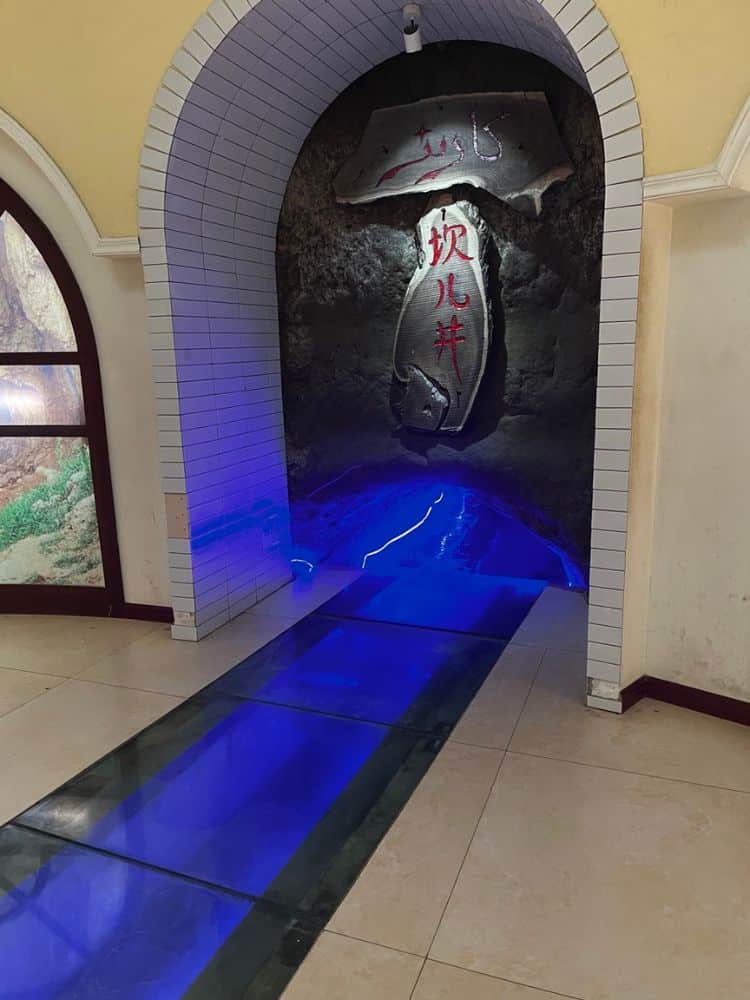
Credit: Valerie Valberg-Yeoh
Although arid, the land in Turpan was made habitable ages ago with the ingenious Karez Irrigation System – an ancient underground water network. To learn how the system works, we explored the Karez (meaning “well” in Uyghur) Museum.
After walking through the tunnels, you even get a chance to taste the water (which some of us did) in the underground simulated set-up. We left convinced that the Turpan oasis provided food, water, and respite for caravans crossing the harsh Taklamakan Desert.
Traditional Uyghur homes
The Karez System is also used at Tuyuq Village 70km east of Turpan, a less commercialised Silk Road site linking Turpan with the Taklamakan Desert.

Credit: Valerie Valberg-Yeoh
There, we found ourselves walking through a 1,700-year-old village with mud-brick homes that are still inhabited. The villagers maintain traditional lifestyles and farmed grapes and melons. For posterity, we posed for photographs against the colourful doors and grapevine trellises.
Tuyuq once served as a spiritual Buddhist centre (4th-9th century) and later became an important Islamic pilgrimage site.
Our last stop of the day was a sweaty climb in 39 degree temperatures up a 2,000-year-old city frozen in time: the Jiaohe Ruins, a UNESCO World Heritage site and an important military and trade hub on the Silk Road, and the world’s oldest, largest, and most well-preserved raw earth ancient city.
Urumqi
Also read:
The Singaporean Obsession With Johor Bahru Goes Beyond Cheap Toilet Rolls
Singaporeans want a ‘kampong feel’ that our identikit malls just do not have, says writer Neil Humphreys.
Cruising Down the Danube: Exploring Eastern Europe Through A River Cruise
Floating through centuries of European history, Lena Soh-Ng finds unexpected moments on the Danube’s legendary waters via river cruising with Avalon Waterways.
At Urumqi, the capital of the Xinjiang Autonomous Uygur Region, we were enthralled with the Xinjiang Museum exhibits and the Xinjiang Ancient Eco Park where we watched an equestrian show featuring the rare Akhal-Teke horses, which are part of the Silk Road legacy.
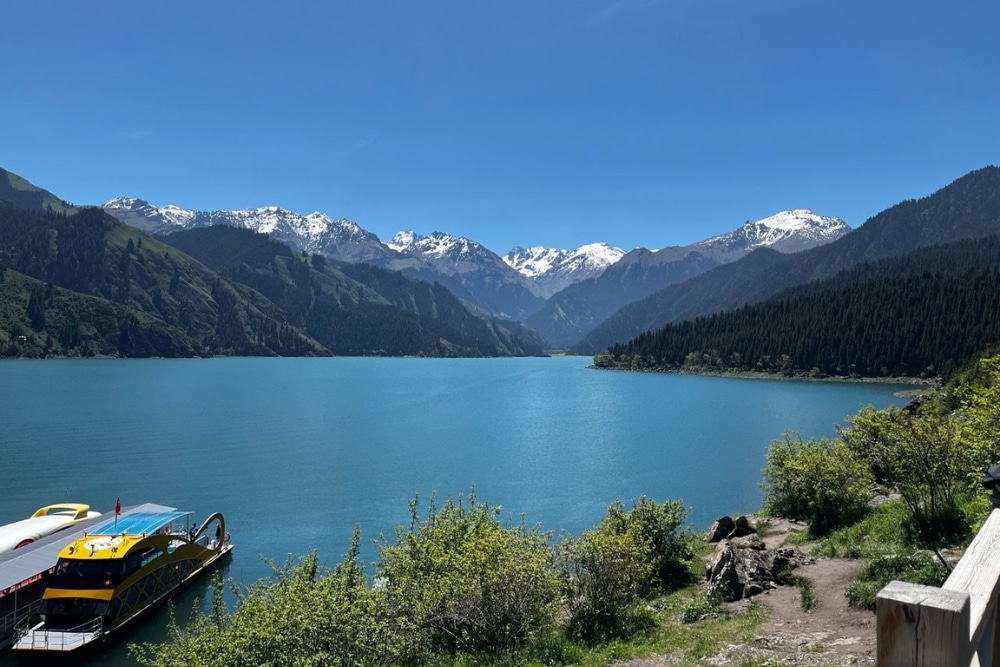
Credit: Valerie Valberg-Yeoh
Just 45km east of Urumqi and 1,900 metres up the snow-capped Tianshan Mountains, I was delighted to take a boat ride around Heavenly Lake. The stunning turquoise lake shares historical ties with ancient Silk Road travellers who passed through the area.
The evening’s finale was a visually delightful scene of dance performances and endless rows of exotic food and wares from the Central Asian region at the Urumqi International Bazaar.
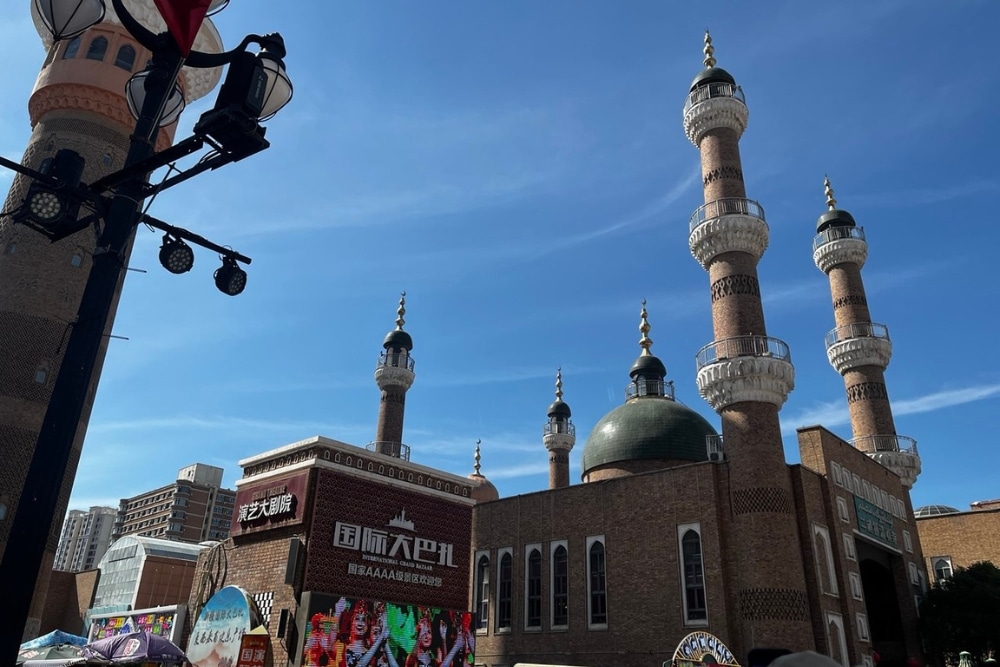
Credit: Valerie Valberg-Yeoh
Despite the potential feast, I couldn’t resist an enticing pre-dinner snack in the form of a hot-off-the-oven curry-puff-looking beef patty.
Kashgar
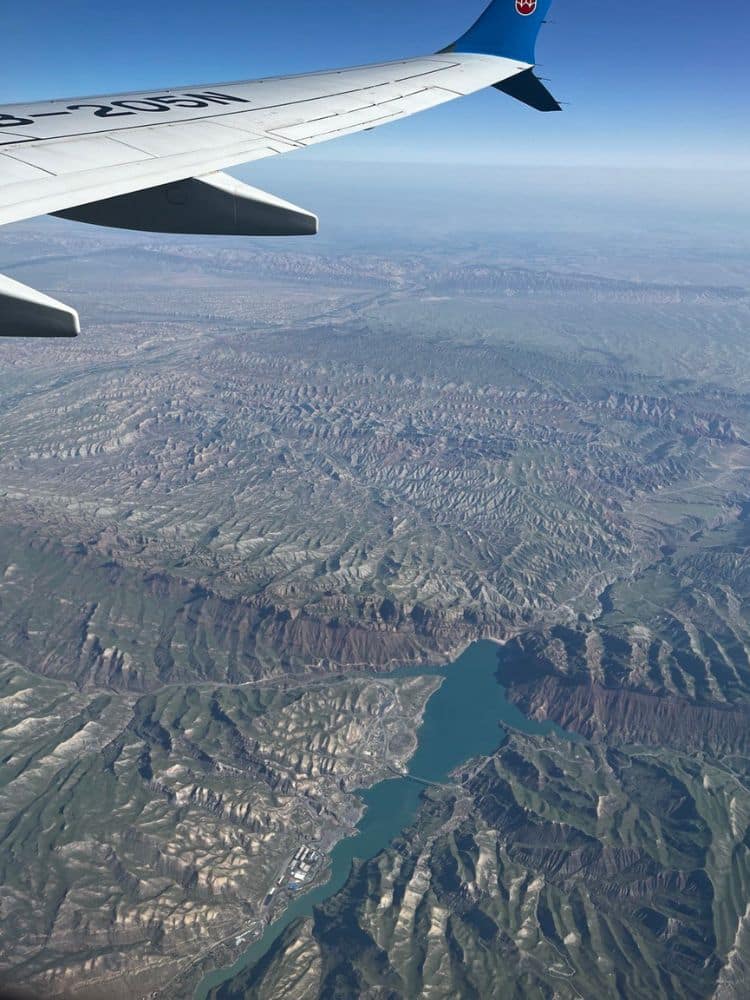
Credit: Valerie Valberg-Yeoh
From Urumqi’s spanking new and impressive airport, we flew south to Kashgar – a major junction between the Northern and Southern Silk Route.
There’s no high-speed rail here. And it all became clear why when I sat at the window seat and marvelled at the mountain ranges we flew over – the Tianshan Mountains and Pamir Mountains.
It had rained the day before so temperatures plummeted to 14 degrees from 30 degrees the previous day. So from braving the heat in Urumqi, we then braved the cold and sand in Kashgar to watch the Grand Welcome Show staged against the ancient city castle-like backdrop.
Even braver were the performers dancing atop the city walls in their costumes. The showcase combined traditional Uyghur music and dance with facets of Chinese, Persian, Turkic, Indian, and European culture. It’s interesting that Kashgar had also been a centre of Buddhist learning before it became an important Islamic centre.
Even the aftermath of a sandstorm (roads and cars all covered in sand) couldn’t quell our enthusiasm for Rendezvous with Kashi – a Disney-style production with the audience taken through four settings.
The first two settings were the most engaging. We “lived” through the ancient times strolling through the villages in Kashgar first, snacking on nuts and dates offered on trays by period-attired ushers.
We were then led to experience the sights and smells of a village marketplace, and a village atmosphere came alive while entertainment took centre stage. The fourth set then culminated in a superbly done, high-tech theatre production.
Tashkorgan (Taxkorgan)
From Kashgar, we geared up for a long six-hour drive through the mountains to our final stop on this Silk Road trip: Tashkorgan. Our guide packed oxygen cylinders. Yes, it was high altitude time again. Along the way at the foothills, we saw traces of the old Silk Road as well as beautiful lakes like the Karakul Lake.
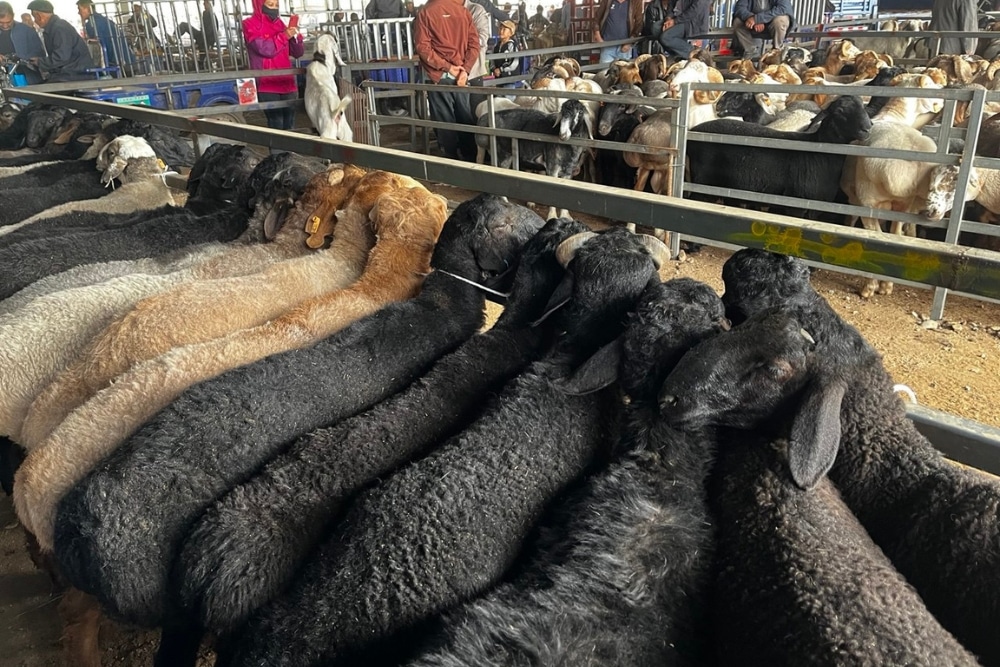
Credit: Valerie Valberg-Yeoh
Before that, we made an interesting stop not for the faint hearted: A visit to a livestock market rife with the sights and smells of hundreds of animals congregating and waiting for their masters to decide their fates through trade.
Adjacent to the livestock market and more welcoming were the sights and smells of a food market – skewered meat was being barbequed and lamb bones were basting. While those were tempting, many of my travel companions lugged back nuts and dried fruit instead.
End of the road: The Panlong Ancient Road
I must confess that I was nervous before the start of this trip because I had read and seen online the over 600 hairpin curves on the winding Panlong Ancient Road. Heading down this way would take us to within 100km of Pakistan and 170km of Afghanistan on the Karakoram Highway.
My daughter offered me her travel neck pillow. In any case, my fears were allayed. I had the most thrilling time (probably the highlight of my trip in Xinjiang) driving through beautiful mountain scenery.
It helps that the driver of our seven-seater vehicle skilfully negotiated the bends along the 36km ride, even as the road climbs from approximately 3,000m to 4,200m in altitude (offering plenty of breathtaking views along the way).

Credit: Valerie Valberg-Yeoh
When we reached the highest point at 4,216m, out came the oxygen tanks. And although it was snowing at -1 degree Celsius, our excitement and sense of accomplishment kept us invigorated.
It had been a truly long journey, and there’s no better way to culminate my Silk Road adventure. I’ve made it!


